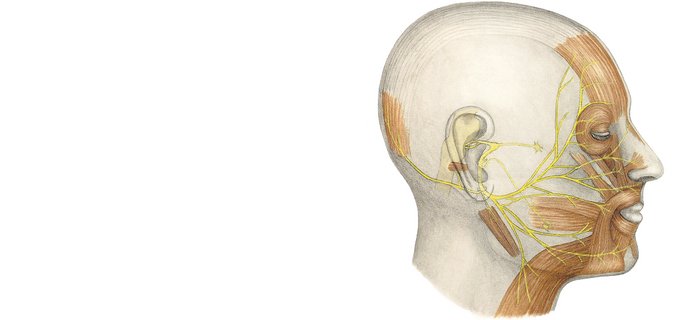Sorensen Clinic
Plastic and Reconstructive Surgery
10 Knaresborough Place
Kensington
London SW5 0TG
United Kingdom
Appointments: +44 (0) 20 7600 4444
Email: info@sorensenclinic.com
Office hours
Monday - Friday: 09.00 - 17.30

Symptoms of facial nerve injury may vary due to age, facial anatomy and the extent of nerve-damage. Frequent patient concerns relate to brow position, movement abnormalities, eyelid closure issues, inability to smile, mid-facial asymmetries, poor oral function and lower lip asymmetry.
A light degree of facial nerve weakness may only be visible as subtle asymmetries following repeated and exhausting muscle function, whereas severe dysfunction can be easily recognised even at rest.
Many of these symptoms will change over time, for example following a spontaneous recovery of nerve function or as a result of different therapeutic modalities (i.e after surgical treatment).
House-Brackmann (HB) is one of several analysis tools developed to quantify facial function and provide reproducible information. It is a widely accepted system, simple, sensitive, accurate and reliable - grading facial function in six steps from normal (HB I) to total paralysis (HB VI).
At the Sorensen Clinic we routinely use the House-Brackmann scale to evaluate new and existing patients. In addition we include a description of segmental weakness (zone-specific information), changes in the facial soft tissues and synkinesis.
House-Brackmann facial nerve grading system
Grade I - Normal
Normal facial function in all areas
Grade II - Slight Dysfunction
Gross: slight weakness noticeable on close inspection; may have very slight synkinesis
At rest: normal symmetry and tone
Motion: forehead - moderate to good function; eye - complete closure with minimum effort; mouth - slight asymmetry.
Grade III - Moderate Dysfunction
Gross: obvious but not disfiguring difference between two sides; noticeable but not severe synkinesis, contracture, and/or hemi-facial spasm.
At rest: normal symmetry and tone
Motion: forehead - slight to moderate movement; eye - complete closure with effort; mouth - slightly weak with maximum effort.
Grade IV - Moderate Severe Dysfunction
Gross: obvious weakness and/or disfiguring asymmetry
At rest: normal symmetry and tone
Motion: forehead - none; eye - incomplete closure; mouth - asymmetric with maximum effort.
Grade V - Severe Dysfunction
Gross: only barely perceptible motion
At rest: asymmetry
Motion: forehead - none; eye - incomplete closure; mouth - slight movement
Grade VI - Total Paralysis
No movement
House, J.W., Brackmann, D.E. Facial nerve grading system. Otolaryngol. Head Neck Surg, [93] 146–147. 1985.